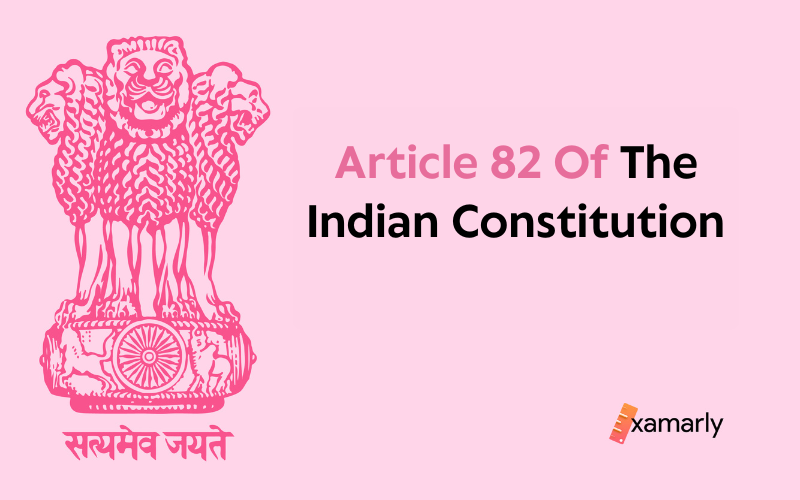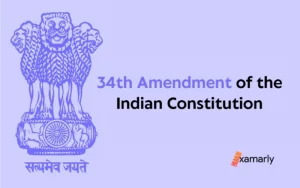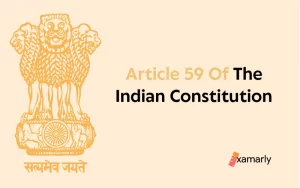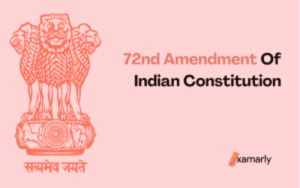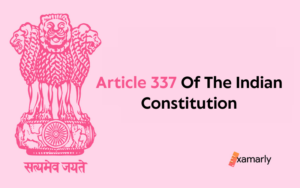According to Article 82 of the Constitution, the Parliament must enact a Delimitation Act after each census in order to fulfill the requirements of the law.
The Central Government establishes the Delimitation Commission after the Act is passed.
According to the rules of the Delimitation Act, this commission decides the parliamentary constituency borders.
Article 82 Of The Indian Constitution
Each time a census is completed, the distribution of members in the Lok Sabha among the States and the division of each State’s geographical constituencies must be revised by the authority and according to the procedure that Parliament may by law determine:
As long as the then-existing House is not dissolved before such a readjustment takes effect, representation in that body will not be affected: Additionally, any election for the House may be held using the territorial constituencies that were in place prior to the readjustment until the date the President specifies in his or her order for the readjustment to take effect.
Additionally, any election for the House may be held using the territorial constituencies that were in place prior to the readjustment until the date the President specifies in his or her order for the readjustment to take effect.
As long as the pertinent data for the first census taken after 2026 has been published, it will not be necessary to readjust
- the distribution of House of the People seats among the States, as readjusted based on the 1971 census; and
- the division of each State into territorial constituencies, as readjusted based on the 2001 census.
Article 82 of the Indian Constitution has been modified by the 84th, 42nd, and 87th Amendments.
Check out the linked articles from the table given below to learn about the articles to prepare for the Indian Polity for the Civil Service Exam Preparation.
Constituent Assembly Debates
Draft The discussion on draft Article 67(8) (Article 82 of the 1950 Constitution of India) took place on January 4, 1949. It stipulated that the number of seats allotted to each State in the House of People and the division of each State into the territory constituencies would be revised by the Parliament following the conclusion of each census.
A member proposed an amendment that would add the phrase “on the basis of population” following the word “readjusted.”
He argued that population should be taken into account when making adjustments. This proposal failed to get support.
Adding a proviso to assure that readjustment wouldn’t happen until the existing House was dissolved was the idea behind an amendment that was submitted by another member.
He stated that it would be impossible to recalibrate existing legislatures and that it should commence after the following elections. This modification was accepted.
On January 4, 1949, the Constituent Assembly enacted this article with amendments.
Purpose For Delineation
When the delimitation exercise is carried out, the justifications enlisted below are employed:
- the representation that is equitable to all demographic segments within a population.
- distributing the world in a fair manner to prevent any one party from unfairly benefiting.
- must stick to the principle of “One Vote, One Value.”
Conclusion
According to Article 82 of the Indian Constitution, the Parliament is required to pass a Delimitation Act following each census.
The Central Government establishes a Delimitation Commission when the Act is enacted and begins to take effect.
According to the Delimitation Act’s guidelines, the Delimitation commission defines the borders of the parliamentary constituencies.
Under 1952, 1962, 1972, and 2002 Delimitation Commission Acts, delimitation commissions were established four times in the past: in 1952, 1963, 1973, and 2002.
FAQs
What Is Delimitation?
Delimitation is the act of defining boundaries.
What Is The Need For Delimitation?
The population of the state serves as the primary criterion for the allocation of seats to different States in the House of People in India. Following a census, the boundaries of each state’s territorial constituencies must be revised in order to maintain the population-seat ratio both inside the state and across the entire Union. Therefore, the goal is to rationalize the design and demographics of the electoral constituencies in accordance with the tenet “One Vote, One Value.”
Which Amendment Has Put A Ban On Delimitation And Why?
Up to the year 2000, no more constituency delimitations were permitted under the 42nd Amendment Act of 1976.
The overall number of seats in the Lok Sabha and Rajya Sabha has therefore stayed the same since the 42nd Amendment Act of 1976. This prohibition was put in place mostly out of concern that some states might not be very interested in family planning if they wanted to gain more members in the Lok Sabha due to their enormous populations. In other words, this was done indirectly to prevent state prejudice against family planning efforts.
Which Amendment Has Amended Article 82?
Eighty-fourth Amendment, Forty-second Amendment, and Eighty-seventh Amendment have amended Article 82 of the Indian Constitution.


